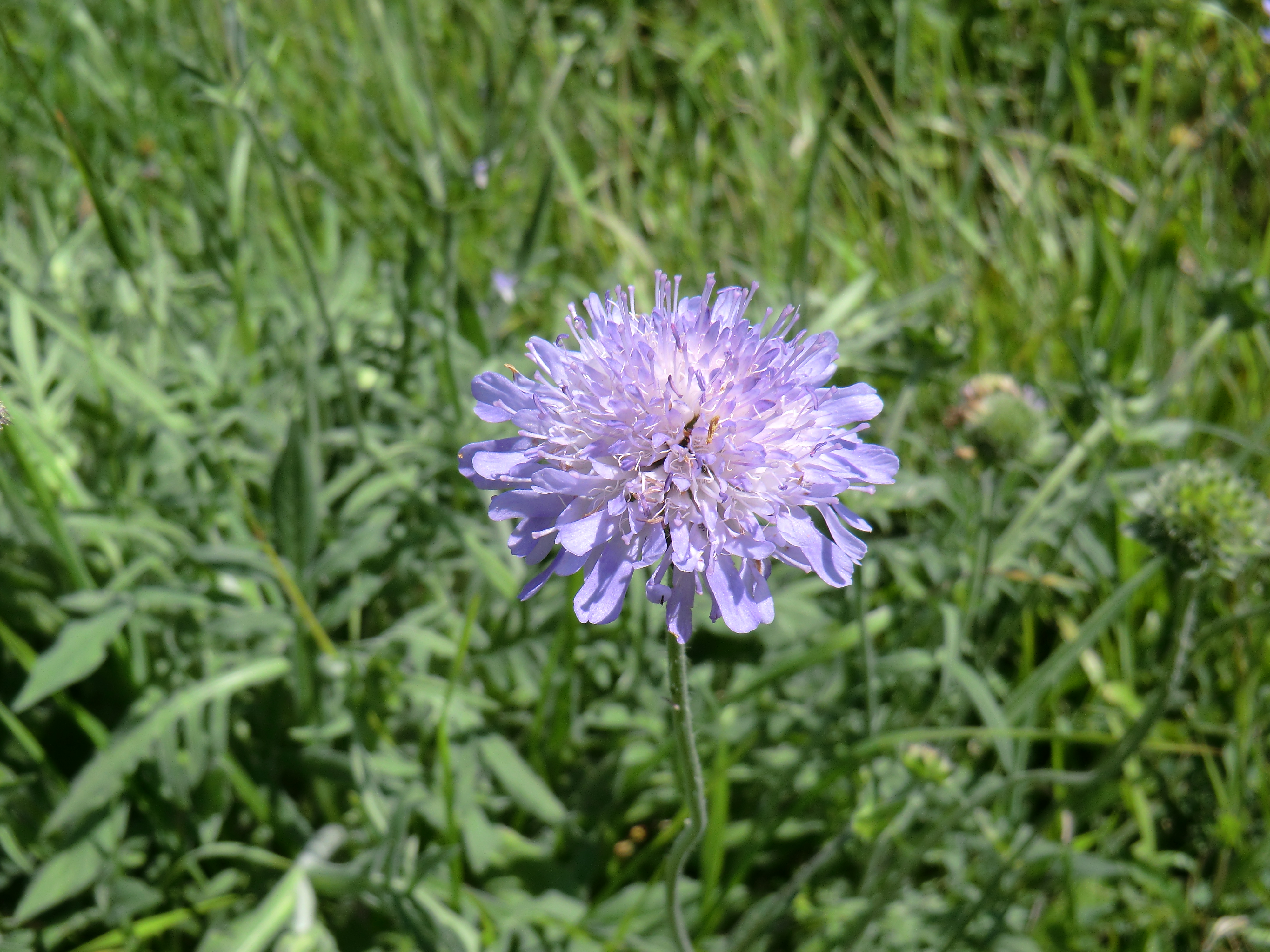This week we are shining the spotlight on chalk grassland habitats. Here in Sutton we are lucky enough to have several chalk grassland sites, including: Cuddington Meadows, Avenue Primary School Nature Area, Carshalton Road Pastures, Devonshire Avenue Nature Area, Wellfield Grasslands and our biggest chalk grassland site Roundshaw Downs.
 Chalk grassland habitats are particularly important to us because they contain a rich variety of flora and fauna, and often support many rare species. In just one square metre of chalk grassland you may find up to fifty different plant species! This is because chalk soils are very nutrient-poor, so plants that grow in these harsh conditions are in strong competition with each other for food, and as a result no one plant species becomes dominant. This means that lots of species can occur in a fairly small area.
Chalk grassland habitats are particularly important to us because they contain a rich variety of flora and fauna, and often support many rare species. In just one square metre of chalk grassland you may find up to fifty different plant species! This is because chalk soils are very nutrient-poor, so plants that grow in these harsh conditions are in strong competition with each other for food, and as a result no one plant species becomes dominant. This means that lots of species can occur in a fairly small area.
These grassland habitats have become increasingly rare, however, owing much of their loss to agricultural land and housing developments. As Britain contains around 50% of the world’s chalk grassland, it falls down to us to make sure we protect as much of this valuable habitat as we can!
The origins of this grassland habitat hail back to a time when people in Britain began to settle and move towards an agricultural way of life. Consequently much of Britain’s ancient woodlands were cut down to make way for crops and grazing space for livestock. The grazing of chalk soils for the last six thousand years created a ‘new’ chalk grassland ecosystem that relies on a fine balance between grazing, scrub and specialised plants.
Nowadays this habitat needs careful management, as neglect means that these grasslands would revert back into woodland eventually, in a natural process called succession. Chalk grassland is usually managed by scrub clearance and grazing (or regular mowing). Wellfield Grasslands and Roundshaw Downs, for example, are grazed by sheep and cattle respectively. Grazing creates a grassland habitat of varying heights and structures, which is essential for the different life stages of insects and plants to set seed. At other sites an annual cut is done, and only part of the grassland removed in any one year to allow a long-grass refuge for animals to inhabit.
Grazing or mowing at low intensity is the key to creating a good quality and healthy chalk grassland. And if you are lucky enough to visit one of Sutton’s chalk grassland sites you can see a wonderful variety of chalk-loving flowers such as Common Restharrow (Ononis repens), Bladder Campion (Silene vulgaris) and Lady’s Bedstraw (Galium verum), Field Scabious (Knautia arvensis) and Marjoram (Origanum majorana) (to name a few!).
You may also see the rare and declining Small Blue butterfly (Cupido minimus), which are completely reliant on kidney vetch (Anthyllis vulneraria), the only food plant of the Small Blue caterpillar. Kidney vetch thrives in chalk grasslands, where it prefers to grow on patches of exposed chalk. Indeed, many of our chalk grassland sites contain patches of bare ground or ‘scrapes,’ that were created by our volunteers to help plants that can only grow on bare chalk to establish and grow.
A lot of careful, year-round management goes into maintaining these chalk grassland sites, but the sheer variety of plants and insects that you can see, especially in the flowering summer months, really show you how valuable this rare habitat is.
Eleanor Kirby-Green
SNCV Biodiversity Assistant











September 6, 2014 at 6:15 pm
My partner and I stumbled over here by a different web page
and thought I should check things out. I like what I see so
now i’m following you. Look forward to looking into your web page repeatedly.
September 8, 2014 at 5:20 pm
Hi Sheila,
Thanks for the kind words! We look forward to seeing you here again. You can also follow our activities on Twitter; see the home page for more on that!